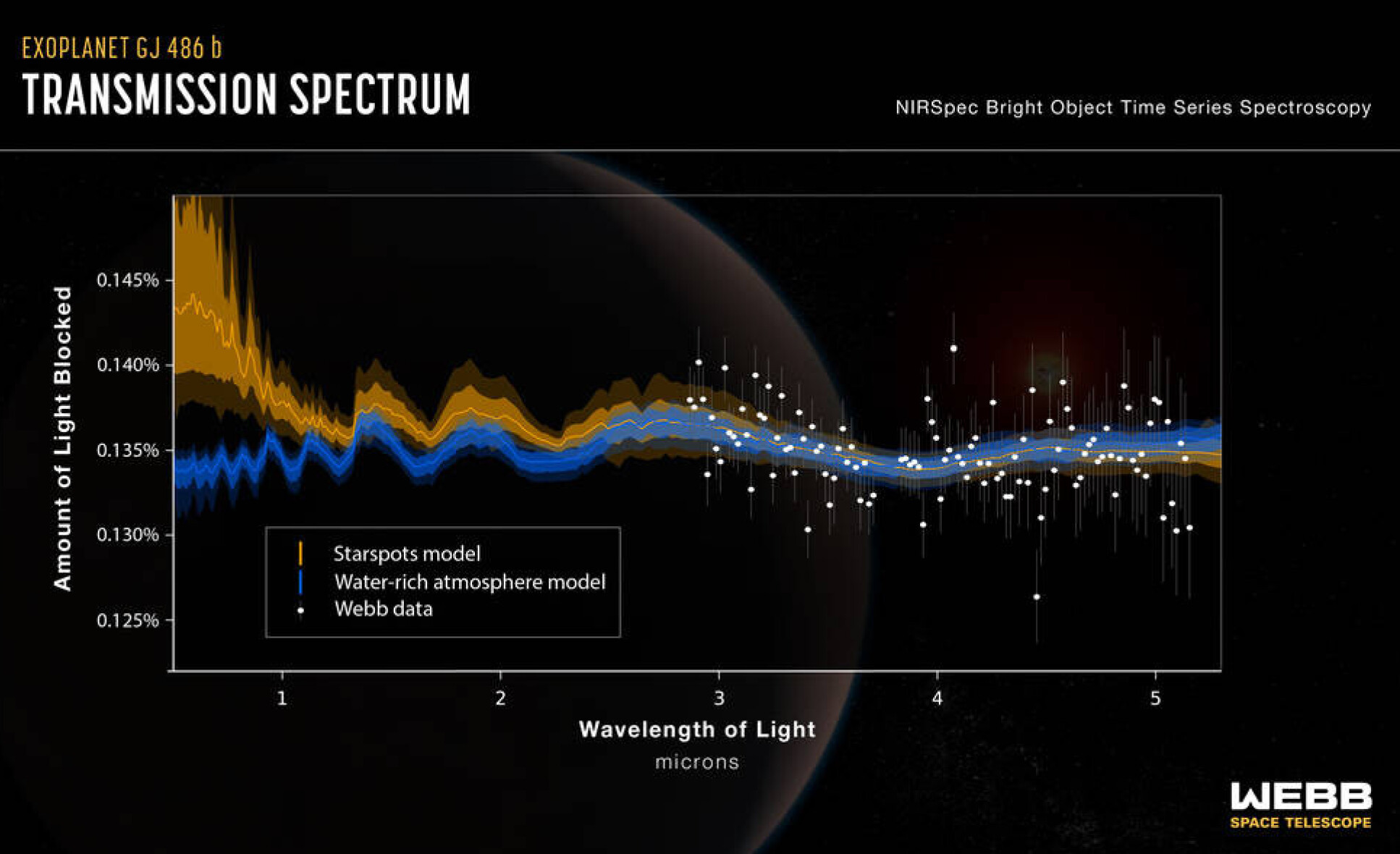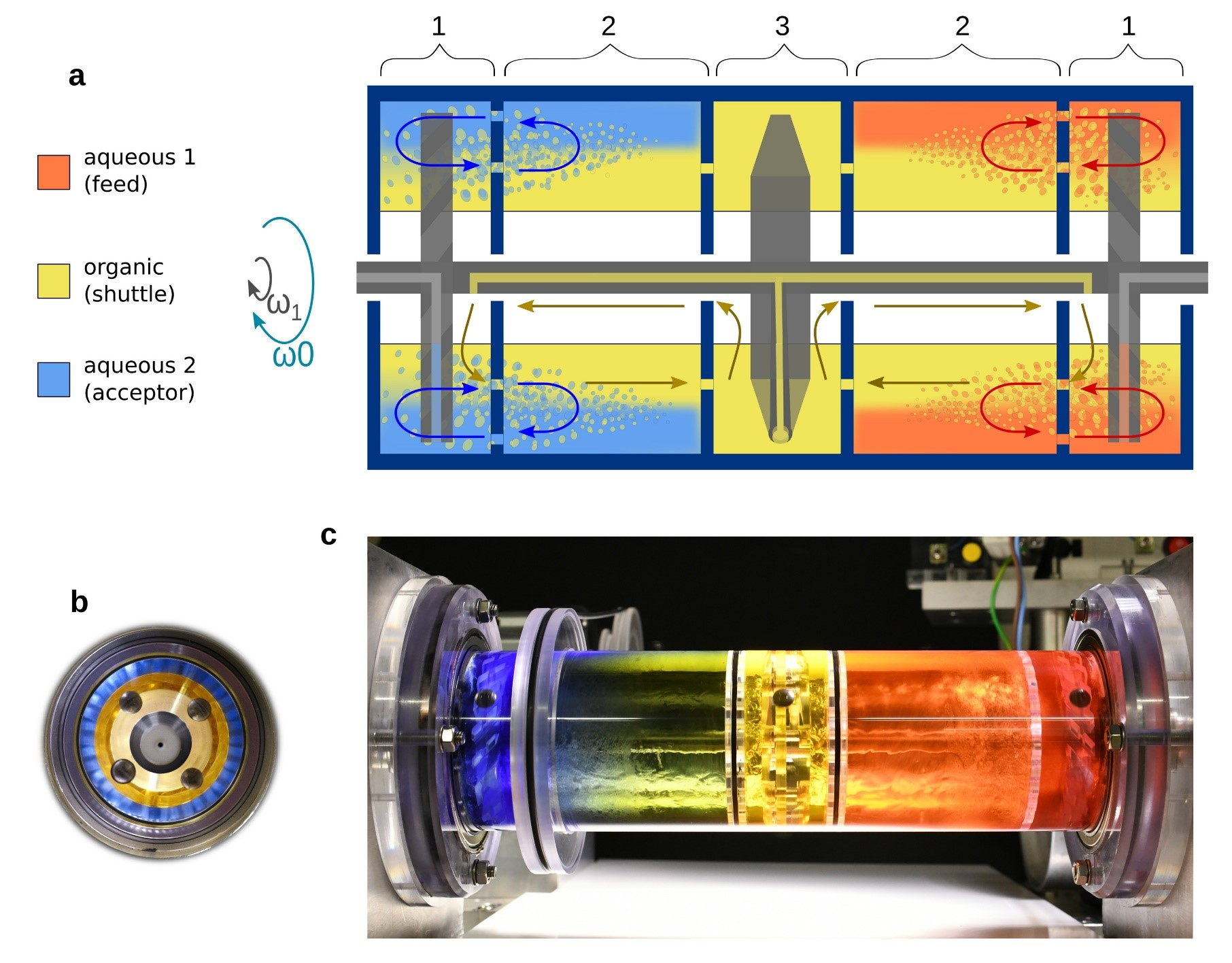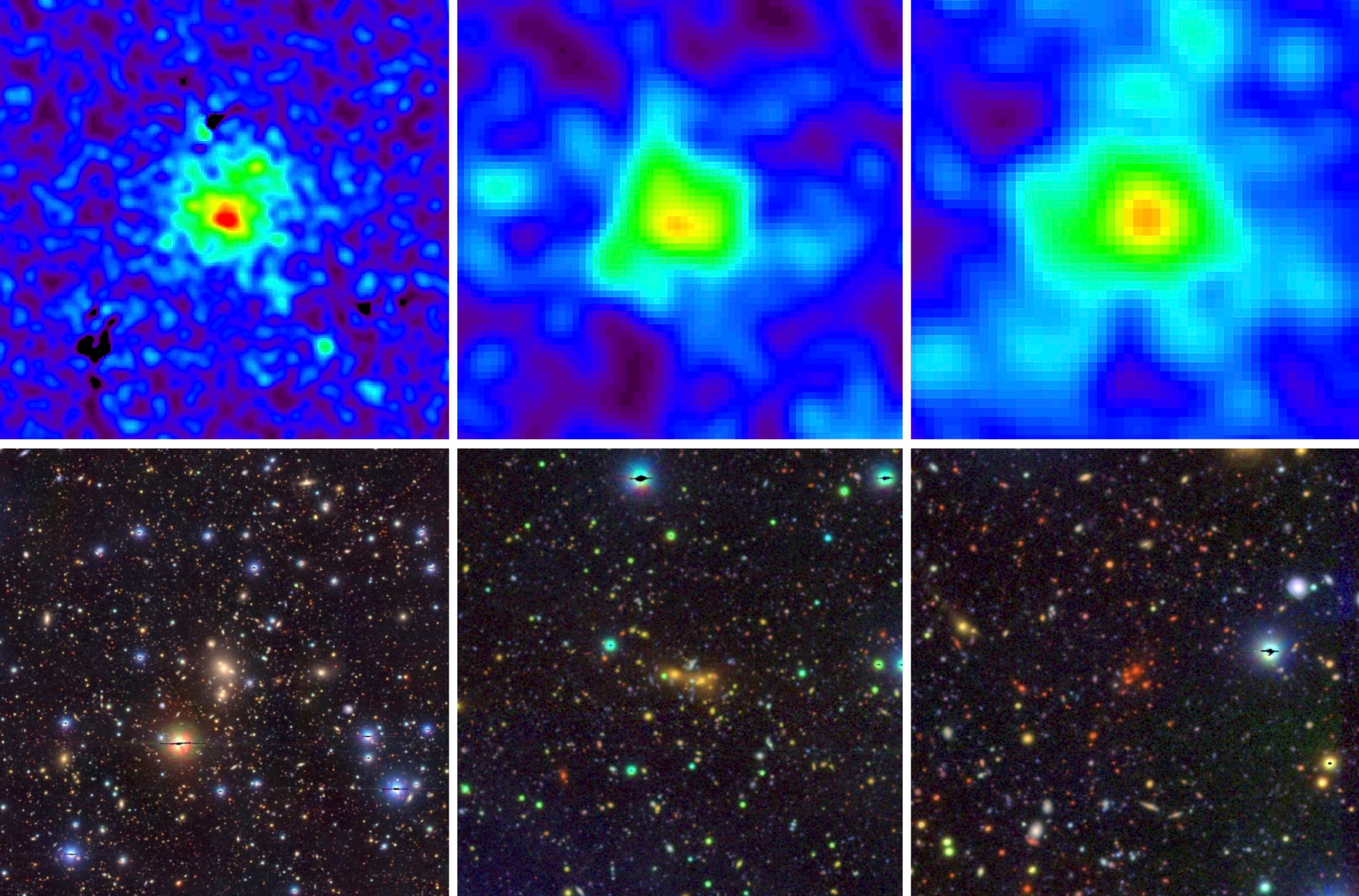2023-05-02 インペリアル・カレッジ・ロンドン(ICL)
 This graphic shows the transmission spectrum obtained by Webb observations of rocky exoplanet GJ 486 b. The science team’s analysis shows hints of water vapor; however, computer models show that the signal could be from a water-rich planetary atmosphere (indicated by the blue line) or from starspots from the red dwarf host star (indicated by the yellow line). The two models diverge noticeably at shorter infrared wavelengths, indicating that additional observations with other Webb instruments will be needed to constrain the source of the water signal. Credits: NASA, ESA, CSA, Joseph Olmsted (STScI)
This graphic shows the transmission spectrum obtained by Webb observations of rocky exoplanet GJ 486 b. The science team’s analysis shows hints of water vapor; however, computer models show that the signal could be from a water-rich planetary atmosphere (indicated by the blue line) or from starspots from the red dwarf host star (indicated by the yellow line). The two models diverge noticeably at shorter infrared wavelengths, indicating that additional observations with other Webb instruments will be needed to constrain the source of the water signal. Credits: NASA, ESA, CSA, Joseph Olmsted (STScI)
◆しかし、この水蒸気は恒星からのものである可能性もあり、この惑星が本当に大気を持っているかどうかを確認するためには、さらなる観測が必要です。
◆岩石質の太陽系外惑星が、過酷な環境下で大気を維持または再確立できるかどうかがわかれば、居住可能な惑星を特定するのに役立つと考えられます。
<関連情報>
- https://www.imperial.ac.uk/news/244692/signs-that-rocky-exoplanet-could-have/
- https://arxiv.org/abs/2305.00868
宇宙の海岸線は大潮か小潮か?JWSTで観測された温暖な超巨大地球GJ486bの水リッチな大気と恒星による汚染
High Tide or Rip-Tide on the Cosmic Shoreline? A Water-Rich Atmosphere or Stellar Contamination for the Warm Super-Earth GJ486b from JWST Observations
Sarah E. Moran, Kevin B. Stevenson, David K. Sing, Ryan J. MacDonald, James Kirk, Jacob Lustig-Yaeger, Sarah Peacock, L. C. Mayorga, Katherine A. Bennett, Mercedes López-Morales, E. M. May, Zafar Rustamkulov, Jeff A. Valenti, Jéa I. Adams Redai, Munazza K. Alam, Natasha E. Batalha, Guangwei Fu, Junellie Gonzalez-Quiles, Alicia N. Highland, Ethan Kruse, Joshua D. Lothringer, Kevin N. Ortiz Ceballos, Kristin S. Sotzen, Hannah R. Wakeford
arXiv Submitted on: 1 May 2023
DOI:https://doi.org/10.48550/arXiv.2305.00868
Planets orbiting M-dwarf stars are prime targets in the search for rocky exoplanet atmospheres. The small size of M dwarfs renders their planets exceptional targets for transmission spectroscopy, facilitating atmospheric characterization. However, it remains unknown whether their host stars’ highly variable extreme-UV radiation environments allow atmospheres to persist. With JWST, we have begun to determine whether or not the most favorable rocky worlds orbiting M dwarfs have detectable atmospheres. Here, we present a 2.8-5.2 micron JWST NIRSpec/G395H transmission spectrum of the warm (700 K, 40.3x Earth’s insolation) super-Earth GJ 486b (1.3 R⊕ and 3.0 M⊕). The measured spectrum from our two transits of GJ 486b deviates from a flat line at 2.2 – 3.3 σ, based on three independent reductions. Through a combination of forward and retrieval models, we determine that GJ 486b either has a water-rich atmosphere (with the most stringent constraint on the retrieved water abundance of H2O > 10% to 2σ) or the transmission spectrum is contaminated by water present in cool unocculted starspots. We also find that the measured stellar spectrum is best fit by a stellar model with cool starspots and hot faculae. While both retrieval scenarios provide equal quality fits (χ2ν = 1.0) to our NIRSpec/G395H observations, shorter wavelength observations can break this degeneracy and reveal if GJ 486b sustains a water-rich atmosphere.



